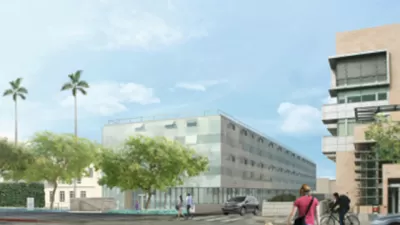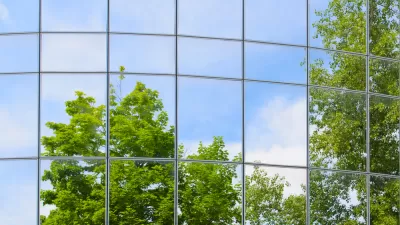Already an urban leader in sustainability with one of the most stringent green building laws in the country, Washington D.C. announced last week that it will create the city’s first “living building” as part of the Sustainable D.C. Budget Challenge.
Accounced last week as one of 12 pilot programs to win a total of $4.5 million in grants as part of the Sustainable D.C. Budget Challenge, "a grant competition in which District agencies proposed projects to test innovative sustainability initiatives," the District's Department of General Services (DGS) was awarded $180,000 "to plan for the city’s first 'Living Building' as part of the international Living Building Challenge to apply the most ambitious green-building standards in the world."
As Rachel S. Karas notes, "The Living Building Challenge focuses on seven aspects of a site — location, water and energy use, health, materials, social equity and beauty — to create a structure that is environmentally friendly and enjoyable to use." Although a site has not been chosen for the project, officials said that a public school renovation is a likely candidate.
"Other [grant] winning projects include planting community gardens at recreation centers, building mobile mini-parks, converting a coal power plant to use renewable energy, composting and creating a public school curriculum for sustainability," adds Karas.
“The city hopes to take the lead in what it means to be sustainable . . . to test the feasibility of major new investments and demonstrate a new way of doing business in the city government,” said Mayor Vincent C. Gray.
FULL STORY: D.C. aims to create sustainable ‘living building’

Alabama: Trump Terminates Settlements for Black Communities Harmed By Raw Sewage
Trump deemed the landmark civil rights agreement “illegal DEI and environmental justice policy.”

Planetizen Federal Action Tracker
A weekly monitor of how Trump’s orders and actions are impacting planners and planning in America.

The 120 Year Old Tiny Home Villages That Sheltered San Francisco’s Earthquake Refugees
More than a century ago, San Francisco mobilized to house thousands of residents displaced by the 1906 earthquake. Could their strategy offer a model for the present?

Indy Neighborhood Group Builds Temporary Multi-Use Path
Community members, aided in part by funding from the city, repurposed a vehicle lane to create a protected bike and pedestrian path for the summer season.

Congestion Pricing Drops Holland Tunnel Delays by 65 Percent
New York City’s contentious tolling program has yielded improved traffic and roughly $100 million in revenue for the MTA.

In Both Crashes and Crime, Public Transportation is Far Safer than Driving
Contrary to popular assumptions, public transportation has far lower crash and crime rates than automobile travel. For safer communities, improve and encourage transit travel.
Urban Design for Planners 1: Software Tools
This six-course series explores essential urban design concepts using open source software and equips planners with the tools they need to participate fully in the urban design process.
Planning for Universal Design
Learn the tools for implementing Universal Design in planning regulations.
Clanton & Associates, Inc.
Jessamine County Fiscal Court
Institute for Housing and Urban Development Studies (IHS)
City of Grandview
Harvard GSD Executive Education
Toledo-Lucas County Plan Commissions
Salt Lake City
NYU Wagner Graduate School of Public Service




























